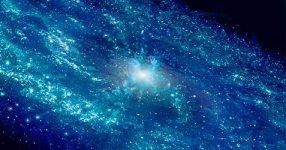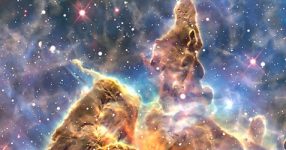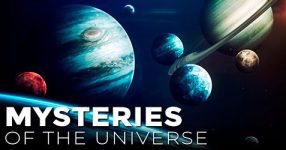Launched on Christmas morning in 2021, the James Webb Space Telescope (JWST) initiated a groundbreaking $10 billion, 30-year mission to unravel the mysteries of the universe’s early stages. Positioned 1.5 million kilometers away from Earth, it has provided a unique vantage point, delivering a treasure trove of data that challenges existing cosmological models and ignites discussions about the “Truth of the First Galaxies.”
Reshaping Cosmic Understanding Through Technology
Throughout history, advancements in telescope technology have continuously reshaped our comprehension of the cosmos. From Galileo’s pioneering observations to the transformative insights provided by the Hubble Space Telescope, humanity’s quest to unveil the secrets of the universe has been relentless. The JWST, now joining this illustrious lineage, is poised to answer profound questions about the origins of galaxies.
Quantum Mechanics and the Cosmic Microwave Background: Uncovering the Cosmic Blueprint
To delve into the universe’s beginnings, we must navigate the intriguing realms of quantum mechanics and the cosmic microwave background. This cosmic blueprint, imprinted with ripples from the era of inflation, plays a pivotal role in influencing the formation of galaxies. The infancy of the universe, evolving from a turbulent sea of energy to the emergence of matter and radiation, is governed by the enigmatic laws of quantum mechanics.
The Birth of Galaxies: A Dance of Gravity and Matter
In the early universe, a cosmic symphony unfolded. Gravity’s invisible hand intensified, causing matter and dark matter to gravitate together, giving birth to the first galaxies. The JWST’s extraordinary observations have triggered a fresh wave of curiosity among astronomers, compelling them to consider factors such as the stellar initial mass function.
Galactic Cannibalism: Our Milky Way’s Voracious Appetite
Recent decades have seen a dramatic shift in our understanding of galaxy evolution. Advanced telescopes have unveiled a plethora of smaller galaxies, challenging the prevailing belief that the epoch of galaxy formation had concluded. Rodrigo Ibata’s groundbreaking research in the 1990s, conducted at the Anglo-Australian Telescope, unveiled the astonishing discovery of the Sagittarius Dwarf, a galaxy in the process of colliding with our very own Milky Way. This celestial encounter highlights a phenomenon known as “Galactic Cannibalism,” wherein our galaxy consumes smaller dwarf galaxies.
Harmony Amidst Controversy: Fine-Tuning Our Cosmic Models
While the JWST’s findings hint at a more intricate early universe than previously imagined, astronomers diligently work to fine-tune their models. The Lambda-CDM cosmological model, despite initial concerns and challenges posed by the new data, remains a foundational pillar in our understanding of the universe. It underscores the dynamic nature of scientific knowledge, emphasizing that cosmic comprehension is an ever-evolving process driven by cutting-edge observations.
In conclusion, the James Webb Space Telescope’s mission to explore the “Truth of the First Galaxies” has already delivered remarkable insights into the early universe. With its powerful observations and invaluable data, it rekindles the spirit of curiosity and exploration, reminding us that the universe’s secrets are still unfolding before our eyes. Through the lens of technology and the lens of history, we continue our relentless pursuit of the cosmic truth.












